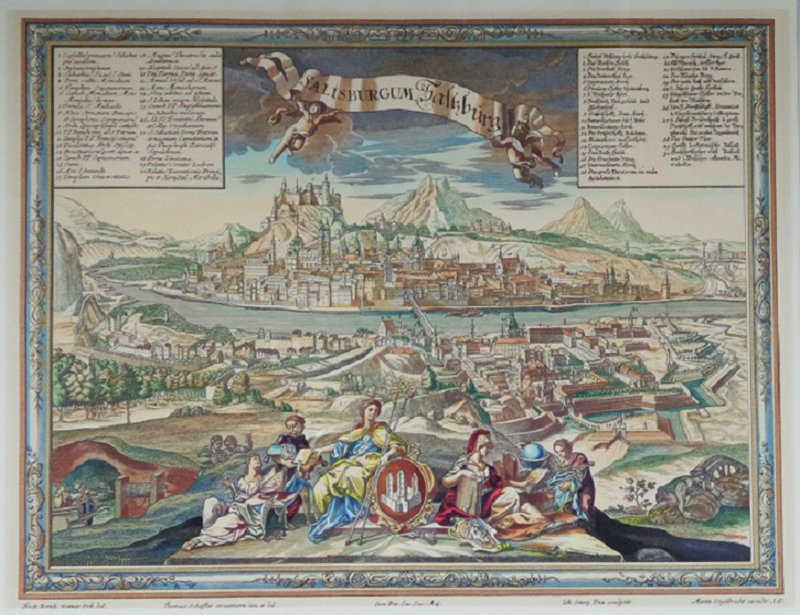City on the Salzach River, now part of Austria; capital of Salzburg province and birthplace of Mozart. In the eighteenth century and earlier, Salzburg—which traces its post-Roman origin to the founding of the Abbey of St Peter by St Rupert of Worms in 696 and of the cathedral by St Virgil in 774—was an independent archdiocese, part of the Holy Roman Empire; during Mozart's time it was ruled by two Archbishops: Siegmund Christoph, Graf Schrattenbach (ruled 1753-1771) and Hieronymus, Graf Colloredo (ruled 1772-1803).

Friedrich Bernhard Werner, Salzburg, mid-eighteenth century (engraving)
- Mozart Relevance
-
Contrary to what is often said about Mozart’s Salzburg, the archdiocese, especially under Archbishop Colloredo, attracted prominent thinkers, writers and academics to its Benedictine University and to the court. Numerous sources document the dissemination of Enlightenment ideas there during the 1770s, even if, in some respects, Colloredo remained a traditional autocrat. Of particular importance to Mozart — in addition to the mechanics of everyday life and the physical objects he encountered there — was the musical life of the city, which represented the professional framework within which he lived and worked until the spring of 1781.
The court music was divided into four distinct and independent groups: the court music proper, which performed in the cathedral, at the Benedictine university and at court; the court- and field-trumpeters, together with the timpanists (normally ten trumpeters and two timpanists), who played in the cathedral, at court and provided special fanfares before meals and at important civic functions; the cathedral music (Dommusik), which consisted of the choral deacons (Domchorvikaren) and choristers (Choralisten) and performed in the cathedral; and the choirboys of the Chapel House, who also performed at the cathedral and who were instructed by the court musicians. The chief duty of the court music proper, together with the Dommusik and choirboys, was to perform at the cathedral. For elaborate performances, the musicians numbered about forty, sometimes more; on less important occasions the performing forces were reduced. In addition to their service at court and at the cathedral, the court musicians also performed at the Benedictine university, where school dramas, originally spoken pedagogical Benedictine plays that during the seventeenth century developed into an opera-like art form, were regularly given; Mozart`s sole contribution to the genre was Apollo et Hyacinthus K38 (1767). The Salzburg Benedictine University promoted both formal and informal music-making including large-scale orchestral works performed in connection with the university's August graduation ceremonies (Mozart's contributions included K203, K204 and K320). Other Salzburg institutions important to musical life included the Archabbey of St. Peter’s, the Frauenstift Nonnberg and the Fürsterzbischöfliche Hoftheater. Civic music making included fanfares by the city watchmen, who were sometimes sometimes leased out to play for weddings, and military bands that provided marches for the city garrisons. Private citizens—including court musicians off duty—also engaged in music making; compositions to celebrate name-days and serenades to celebrate weddings, such as Mozart’s ‘Haffner’ serenade K250, were common, as was domestic music-making generally. Numerous institutions with musical interests, either within the state or just outside its borders, maintained close contact with the Salzburg court and its musicians. These included the Benedictine monastery at Michaelbeuern and the Benedictine monastery at Lambach.
- Category/Role
- City
- Bibliographic Reference
- Hintermaier 1972, Dahms 1976, Schmid 1976, Birsak and König 1983, Dopsch, 1983, Eisen 1989